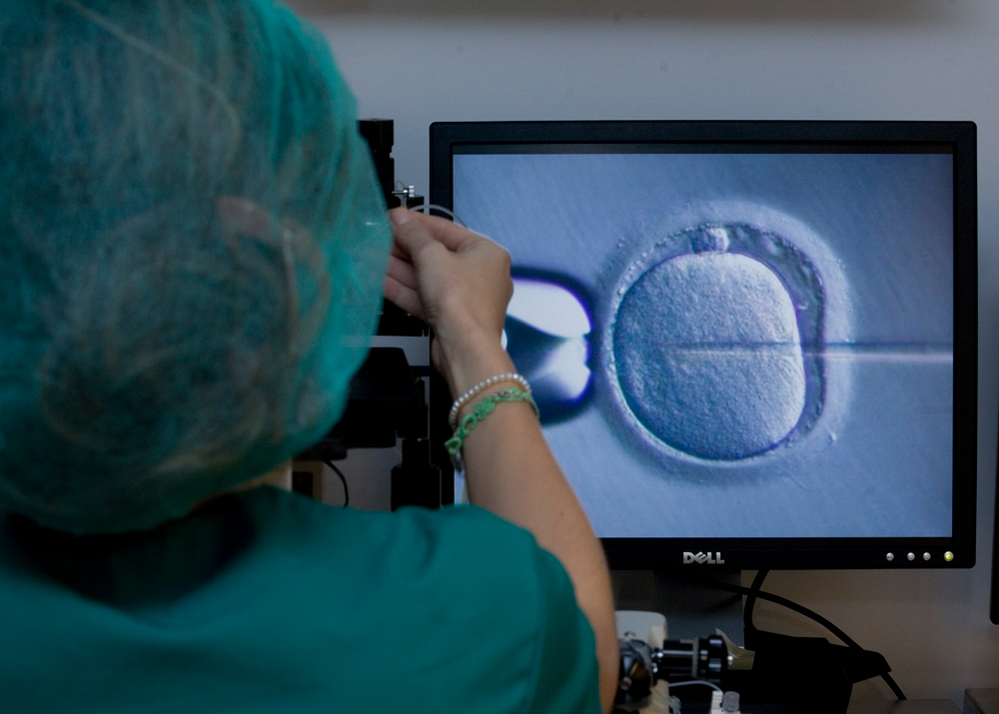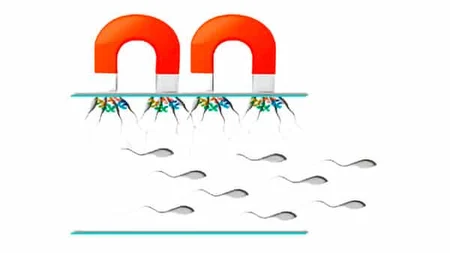
Assisted reproduction
The MACS technique (Magnetic Activated
Cell Sorting)
As you will find out below, the MACS technique enables us to optimise the selection of spermatozoa before they are used in our assisted reproduction treatments.
The MACS (Magnetic Activated Cell Sorting) technique is especially suitable for cases of male infertility in which there is a percentage of pathological sperm DNA fragmentation. It can improve the fertilisation rate by up to 13% in both IVF and artificial insemination treatments.
What is the MACS technique?
MACS enables the immunomagnetic selection of healthy spermatozoa that are optimal for egg fertilisation, separating them from those with apoptotic markers which indicate that the spermatozoon will most likely die. This technique is especially designed for use in artificial insemination as well as in IVF and ICSI treatments.
Apoptosis or programmed cell death is a process for controlling the cell lifecycle. It starts during spermatogenesis, when cellular damage such as sperm DNA fragmentation, for example, is detected.
In various studies of males with infertility, it has been found that their ejaculate contains a high number of spermatozoa which have apoptotic markers, which therefore means that the control mechanism itself has not functioned correctly, or else there are a high number of damaged cells. This may be due to both intrinsic and extrinsic factors (smoking, stress, fever, varicocele, etc.).
In this context we turn to immunomagnetic cell selection, a.k.a. MACS. In thistechnique, spermatozoa pass through a magnetised column in such a way that thosewith apoptotic markers in their membranes are retained in the filtration columnthrough which the sperm sample passes, whilst the healthy spermatozoa which aresuitable for egg fertilisation are let through. This selection improves the fertilisationrate by up to 13%

What does the MACS technique consist of?
The technique is based on the use of magnetic microspheres which are conjugated to molecules of Annexin V which in turn recognise and adhere to the phosphatidylserine in the membrane of the spermatozoa.
Phosphatidylserine is an early marker of cellular apoptosis, seeing as in healthy cells this phospholipid is found towards the interior of the membrane, but when apoptosis begins in the cell, the molecule moves outwards.
Therefore, we can use MACS to indicate the presence of spermatozoa with this marker because when they are made to pass through the magnetised column, they are retained within it, allowing us to separate them from the healthy spermatozoa.
When should the MACS technique be used?
This technique is especially suited to the following cases:
- Patients who have been diagnosed with pathological sperm DNA fragmentation.
- Patients who have undergone more than two treatment cycles without gestation.
- Patients with recurrent miscarriage









